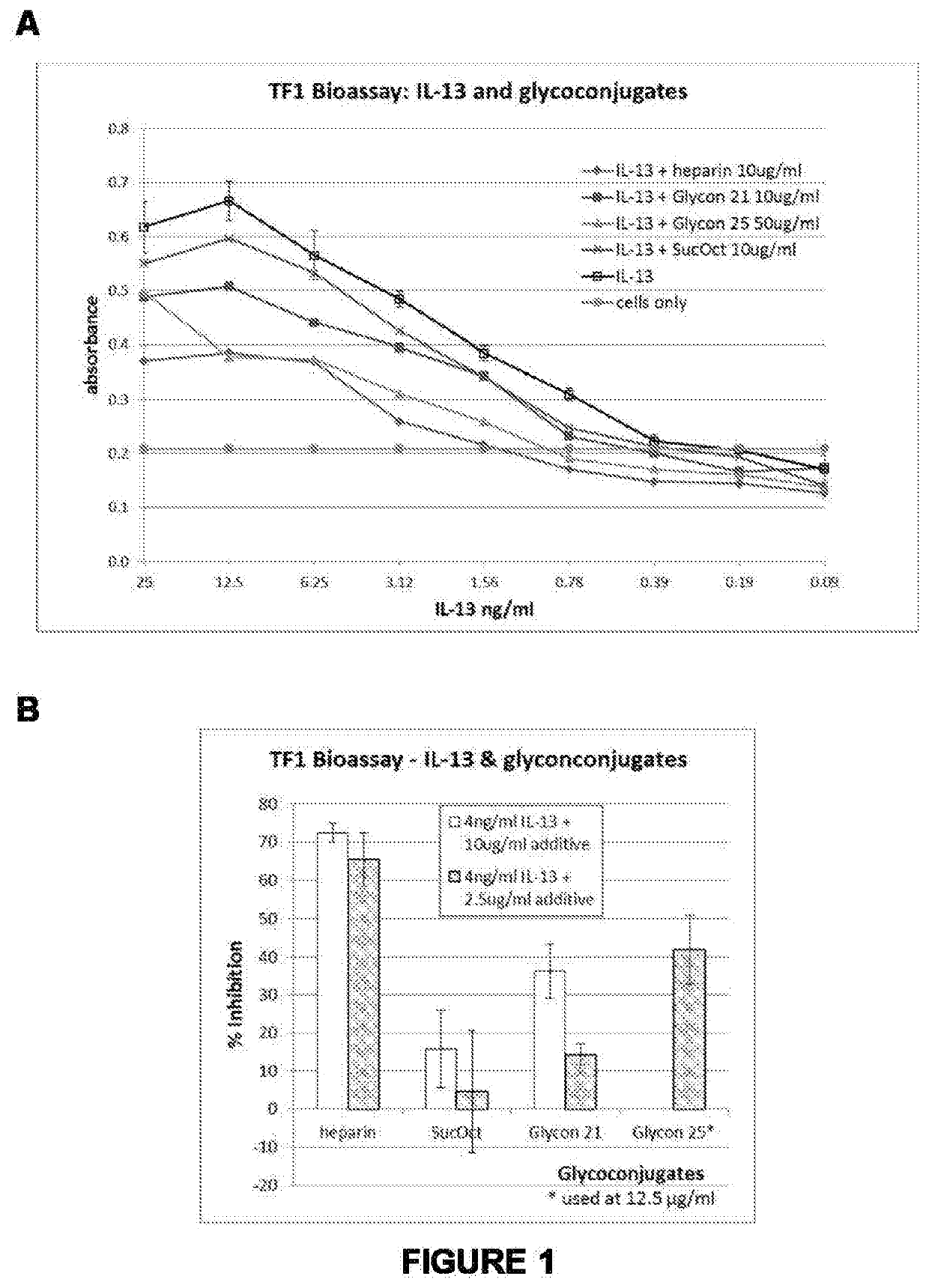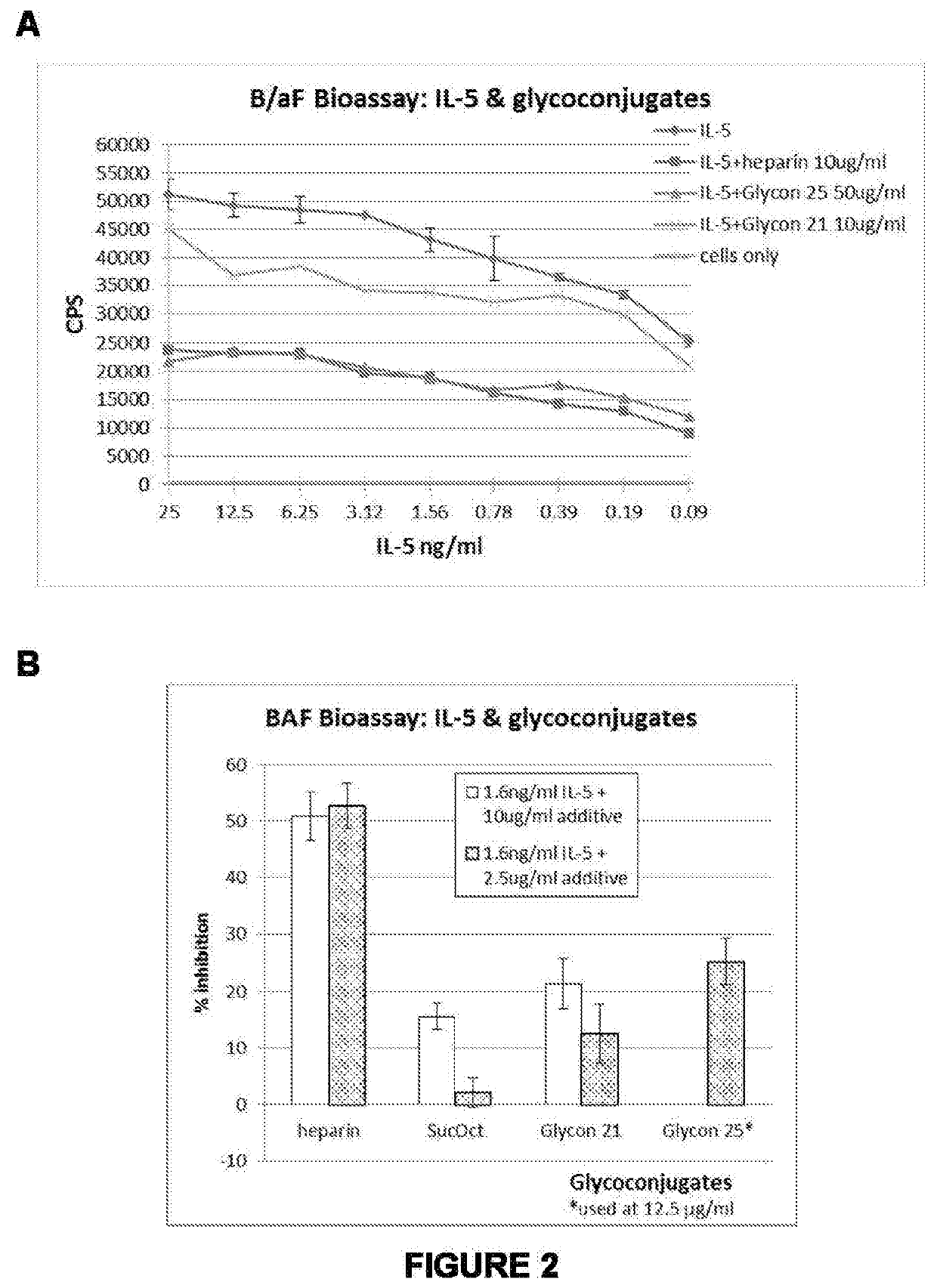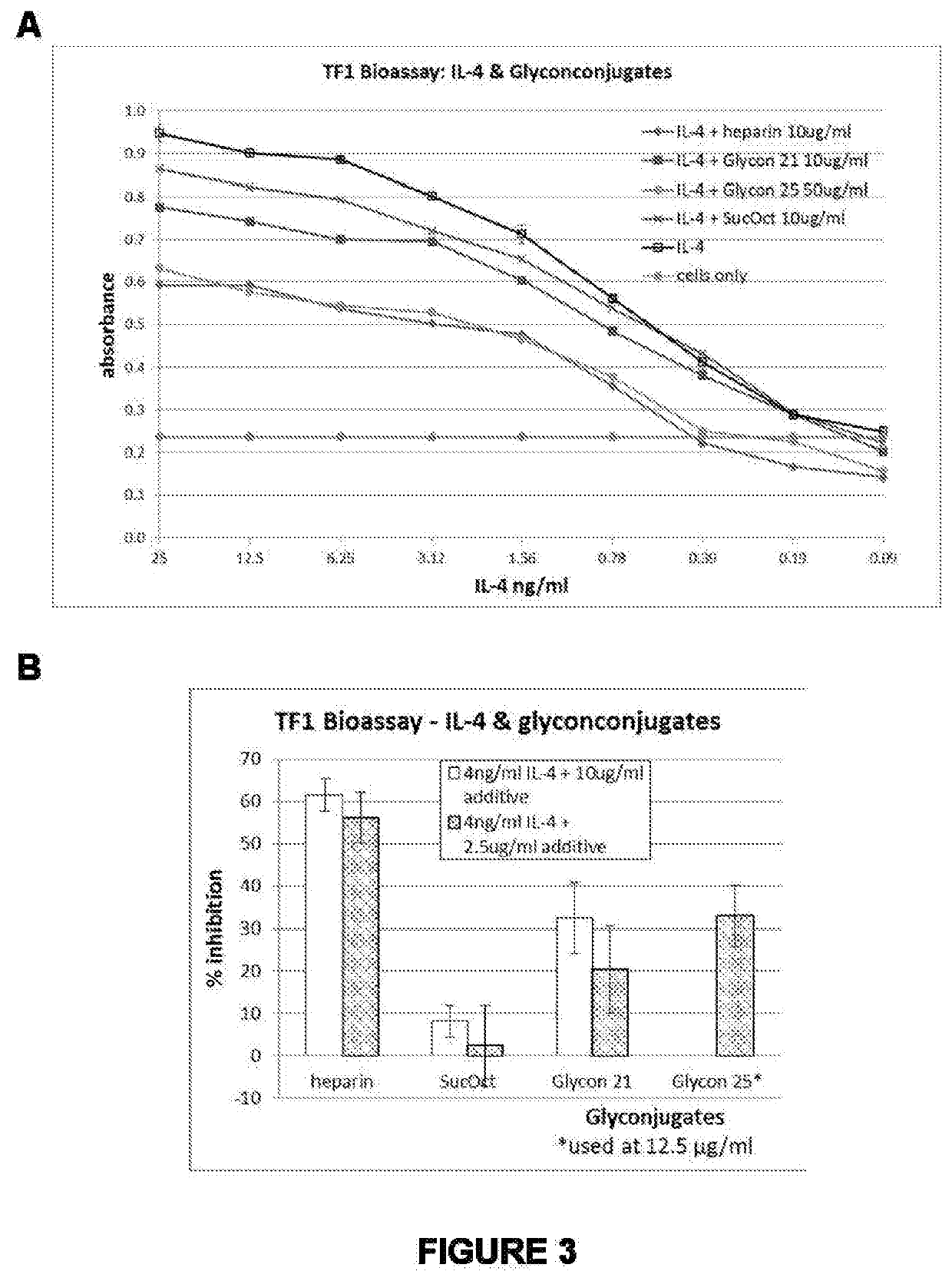Therapeutic agents and methods of producing same
- Summary
- Abstract
- Description
- Claims
- Application Information
AI Technical Summary
Benefits of technology
Problems solved by technology
Method used
Image
Examples
example 1
6′-azido-6′-deoxysucralose (1)
[0282]
[0283]Sucralose (4.069 g, 10.23 mmol) was dissolved in DMF (10 mL) and sodium azide (1.48 g, 22.77 mmol) was added. The reaction mixture was heated at 120° C. for 60 hours. Solvent was removed by reduced pressure. Residue was dissolved in hot 2-propanol and filtered to remove unwanted salts. The filtrate was concentrated under reduced pressure to obtain a brown colored viscous oil. The oil was purified by flash chromatography (eluent, 95:1 ethyl acetate / methanol) to afford 6′-azido-6′-deoxysucralose 1 (1.227 g, 29%) as a pale yellow viscous oil. Compound was unable to be fully characterized by 1H NMR.
[0284]1H NMR (D2O, 400 MHz): 5.51 (d, 1H, J=4 Hz, H-1), 4.57 (m, 1H, H-4), 4.41-4.48 (m, 2H, H-3′, H-5), 4.09-4.25 (m, 3H), 3.93-4.06 (m, 2H), 3.77-3.88 (m, 4H), 3.61-3.67 (dd, 1H).
[0285]13C NMR (D2O, 100 MHz): 103.4, 92.64, 80.0, 76.0, 74.4, 71.6, 71.2, 70.9, 61.7, 60.6, 52.6, 43.5.
[0286]Rf=0.76 (95:5 ethyl acetate / methanol)
example 2
2,3,3′,4′,6-Penta-O-acetyl Sucralose (2)
[0287]
[0288]Sucralose (6.125 g, 15.40 mmol) was dissolved in pyridine (80 mL) and acetic anhydride (30 mL) was added. The reaction mixture was stirred at room temperature for 18 hours under nitrogen atmosphere. Pyridine was removed under reduced pressure and the remaining reaction mixture dissolved in ethyl acetate (50 mL). This was washed with HCl (1M, 3×30 mL), brine solution (30 mL), ammonia solution (30%, 1×60 mL), and brine solution (30 mL). Aqueous washings were discarded. The organic extracts were concentrated under reduced pressure to afford 2,3,3′,4′,6-penta-O-acetyl sucralose 2 (8.616 g, 92%) as a white crystalline powder. Compound was sufficiently pure for subsequent steps.
[0289]1H NMR (CDCl3, 400 MHz): 5.69 (d, 1H, J=6.4 Hz, H-3′), 5.67 (m, 1H, H-1), 5.41 (t, 1H, J=6.4 Hz, H-4′), 5.30 (t, 2H, J=1.9 Hz, H-2, H-3), 4.54-4.59 (m, 2H, H-4, H-5), 4.36-4.42 (m, 1H, H-5′), 4.22-4.28 (m, 3H, H-6a, H-6b, H-5′), 3.77 (dd, 2H, J=0.8, 6 Hz, H-...
example 3
2,3,3′,4′,6-Pent-acetyl-6′-azido-6′-deoxysucralose (3)
[0294]
[0295]Sucralose pentaacetate 2 (4.025 g, 6.62 mmol) was dissolved in DMF (15 mL) and sodium azide (0.489 g 7.52 mmol) was added. The reaction mixture was heated at 120° C. for 24 hours. Solvent was removed by reduced pressure. The residue was dissolved in a mixture of DCM / water (1:1, 100 mL). The aqueous phase was extracted with DCM (3×50 mL). The organic extracts were combined and washed with copper sulfate solution (3×30 mL) and brine solution (30 mL). The organic extract was dried over magnesium sulfate, and concentrated under reduced pressure to obtain crude material as a yellow viscous oil. The residue was purified by flash chromatography (eluent, 1:1 ethyl acetate / petroleum spirits 40-60) to afford 2,3,3′,4′,6-penta-O-acetyl-6-azido-6′-deoxysucralose 3 (1.784 g, 44%) as a faintly yellow viscous oil.
[0296]1H NMR (CDCl3, 400 MHz): 5.70 (d, 1H, J=6.8 Hz, H-3′), 5.66 (d, 1H, J=3.6 Hz, H-1), 5.31-5.36 (m, 2H, J=6.8 Hz, H-3...
PUM
| Property | Measurement | Unit |
|---|---|---|
| Equivalent mass | aaaaa | aaaaa |
| Electric charge | aaaaa | aaaaa |
| Therapeutic | aaaaa | aaaaa |
Abstract
Description
Claims
Application Information
 Login to View More
Login to View More - Generate Ideas
- Intellectual Property
- Life Sciences
- Materials
- Tech Scout
- Unparalleled Data Quality
- Higher Quality Content
- 60% Fewer Hallucinations
Browse by: Latest US Patents, China's latest patents, Technical Efficacy Thesaurus, Application Domain, Technology Topic, Popular Technical Reports.
© 2025 PatSnap. All rights reserved.Legal|Privacy policy|Modern Slavery Act Transparency Statement|Sitemap|About US| Contact US: help@patsnap.com



